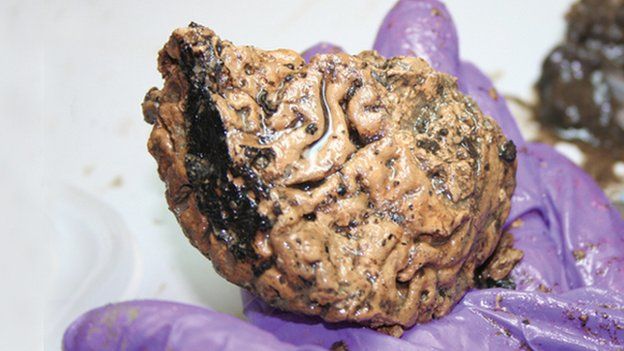'Oldest human brain' may have been preserved by mud
- Published

A human brain, believed to be the oldest ever discovered, may have been preserved for over 2,000 years by mud, archaeologists have said.
The organ was found inside a decapitated skull at an Iron Age dig site near York in 2008.
Tests on the remains suggested they were from the 6th Century BC, making them about 2,600 years old.
York Archaeological Trust said the skull had been buried in wet, clay-rich ground providing an oxygen-free burial.
They said the burial location could have helped conserve the brain, although the exact reason for its survival is unknown.
'Yellow spongy material'
The trust said it was exceptionally rare to find any soft tissue remains.
The skull was discovered face down in a pit, but it was only when it was being cleaned that the brain was found inside.
Rachel Cubitt, collection projects officer, said: "I peered though the hole at the base of the skull to investigate and to my surprise saw a quantity of bright yellow spongy material.
"It was unlike anything I had seen before."
A team of 34 experts have been working to study and conserve the brain since its discovery, the trust said.
Research suggests the skull probably belonged to a man aged between 26 and 45.
He had been hit hard on the neck before his head was removed from the body using a small, sharp knife.
The trust said one theory behind the brain's survival was a quick burial.
Over time the skin, hair and flesh of the skull had rotted but no new oxygen in the brain, and a lack of movement, may have protected and preserved it, the trust said.
- Published12 December 2008